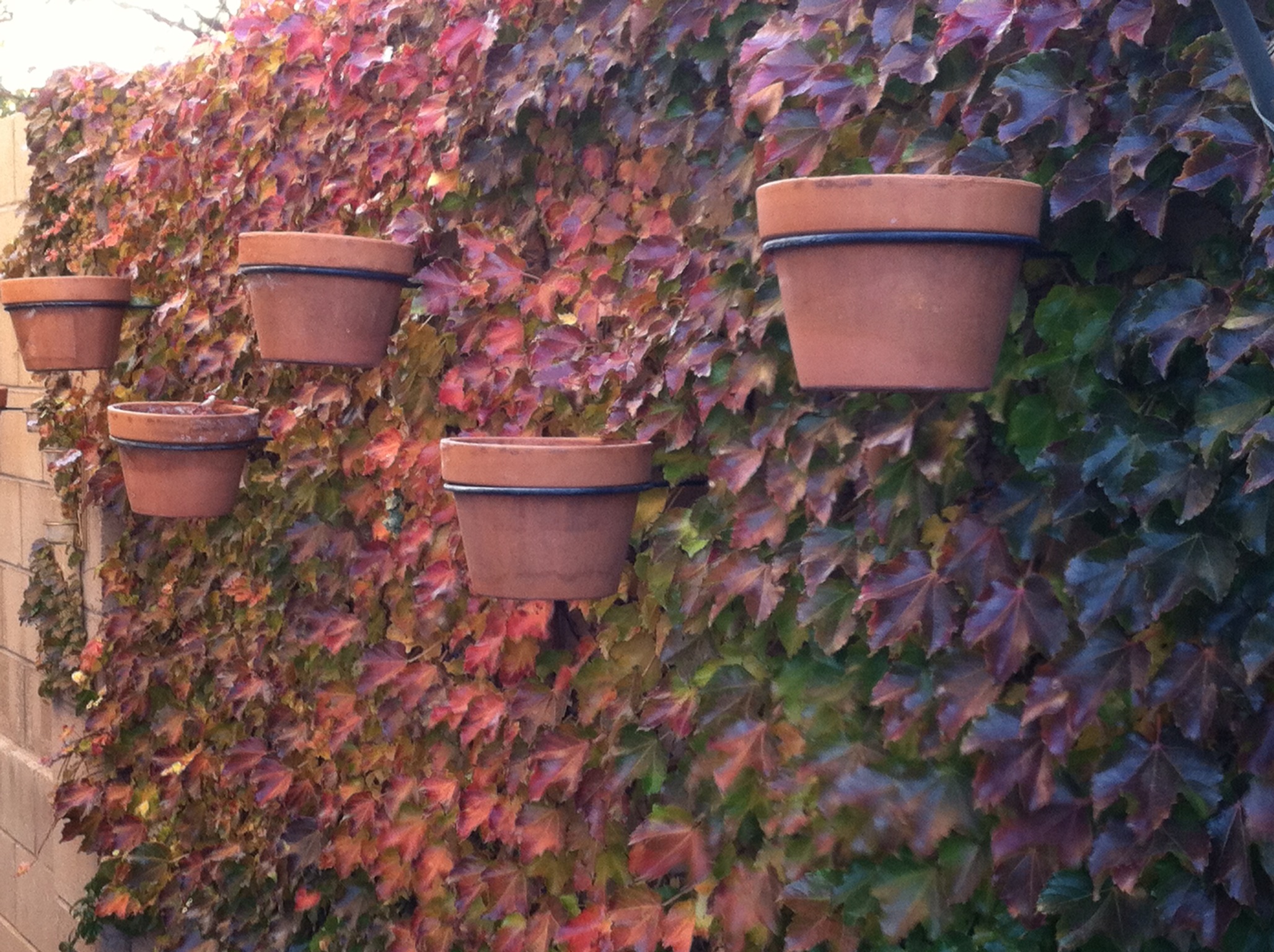Plant of the Month: Boston Ivy

Boston Ivy
Scientific Name: Parthenocissus tricuspidata
Other Common Name: Boston ivy, Japanese ivy
Type: Perennial
Family: Vitaceae (Grape family)
Indigenous Range: China and Japan
Zone: 4-9
Growth habit: Vine with holdfasts at ends of tendrils
Length: 50’
Bloom Time: Spring
Bloom Description: Insignificant, small white behind leaf shaded from the sun
Sun: Partial shade to full sun
Water: Medium
Soil: Well drained, loamy
Maintenance: Pruning required for controlling vine growth
Suggested Use: Covering walls, garden arbors, pergolas
Flower: Inconspicuous
Leaf: Young plants have compound three leaflets; mature plants, simple three lobed leaves
Tolerate: poor soil, low water (after established)
History and Characteristics
Boston ivy (Parthenocissus tricuspidata) is an ornamental, attractive, close-clinging climbing vine that covers the outer walls of many older buildings, particularly in Boston. The term “Ivy League” is derived from this prolific growing vine that often climbs to 50’ and spreads 15’ on the exterior walls of numerous upscale campuses. Boston ivy which is also called Japanese ivy can quickly overtake the area in which it is planted, climbing by tendrils with holdfasts on any support nearby. When planting Boston ivy, consider it a permanent resident species to fill the selected location with a “green” summer façade. The mature plant with its 4-8” across shiny three lobed leaves will reach its aforementioned overall size within a few years. This deciduous vine bears new leaves each Spring which are reddish in color, typically turn an emerald green in summer and turn deep purple to scarlet to orange in the Fall depending on the amount of daily sunshine it receives in the planting site. The plants will produce inconspicuous flowers, yielding clusters of dark blue berries which are poisonous to humans and pets if ingested, but are apparently enjoyed by multiple bird species.
Culture and Care
Care of Boston ivy is simple. It prefers warm, mild climates and moist, aerated soil, which is slightly acidic to neutral, but it will grow (and most likely thrive) in most locations. Plant approximately 12” away from the wall or structure that is to be covered by the vine. Plant in partial shade to full sun as it will do equally well in either but will produce more vibrant fall colors in a full sun situation. Water deeply at least once a week during the first growing season to establish a good root system. Vines can grow 3-10’ per year. Keeping it trimmed may encourage it to take on a shrub form in maturity.
Controlling Vigorous Climbers
An established Boston ivy is almost impossible to kill, so plant it at least 15 feet from any surface on which you do not want it to climb, and always keep your pruning shears ready. Since it is a notorious rapidly growing climber when unobstructed by pruning or vine breakage, annual pruning is necessary to control size when the vines have grown enough to cover the desired wall or structure. Always prune to prevent vines from covering doors and windows if growing on the house and trim any branches that break away from the wall as they cannot reattach. These vines tolerate a lot of shearing, so pruning to remove troublesome vines can be done anytime of the year. If the vines have gotten to places that it is not welcome, there are a few tricks to prevent damage to the wood, stone, brick, or stucco. To remove the ivy with least amount of damage to either the plant or the wall, prune the leaves first followed by severing the trailers that are not desirable in their placement on the structure. Finally apply an herbicide to the severed trailers no longer attached to the main plant although still attached to the structure. White vinegar will kill the ivy and is a less toxic choice perhaps than commercial herbicides, but it will also kill any other plants in the vicinity so applying it only to the ivy is necessary. Once the ivy has browned, it will fall from the brick, stone, wood, etc. without damaging the surface or any paint. Continue to prune the remaining living ivy regularly since given a chance, ivy will climb year-round in mild weather.
More information:
http://plants.usda.gov/core/profile?symbol=PATR6
http://www.gardeningknowhow.com/ornamental/vines/boston-ivy/growing-boston-ivy.htm
http://www.gardeningknowhow.com/ornamental/vines/boston-ivy/pruning-boston-ivy-vines.htm
http://landscaping.about.com/od/vineplants1/p/boston_ivy.htm
http://homeguides.sfgate.com/close-should-plant-boston-ivy-wall-92097.html
